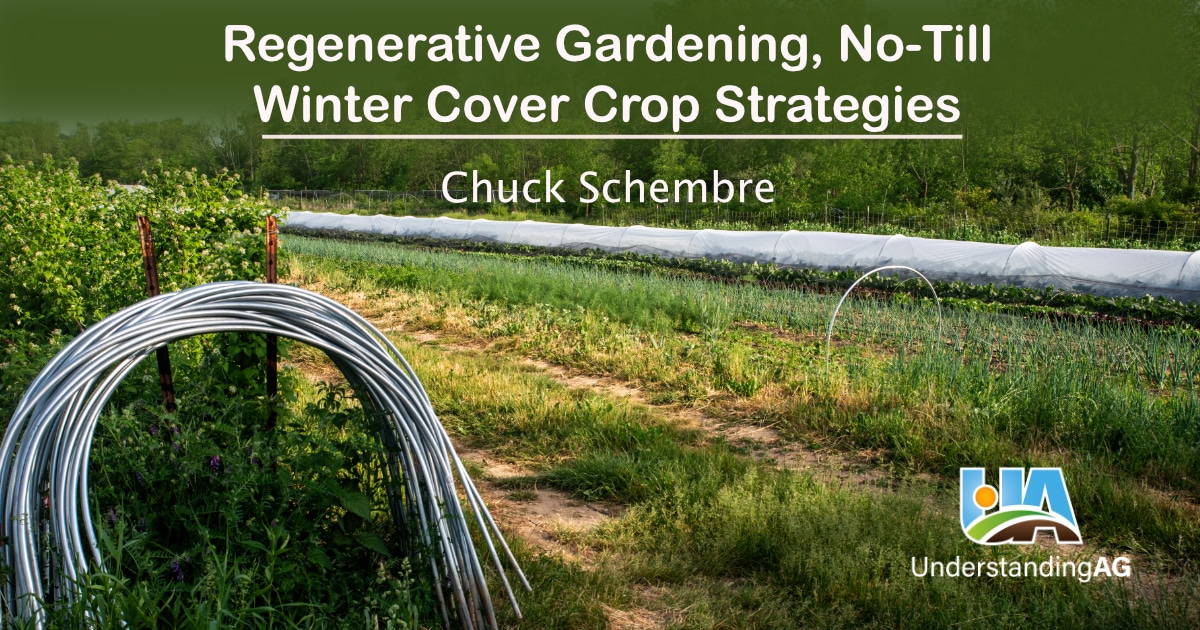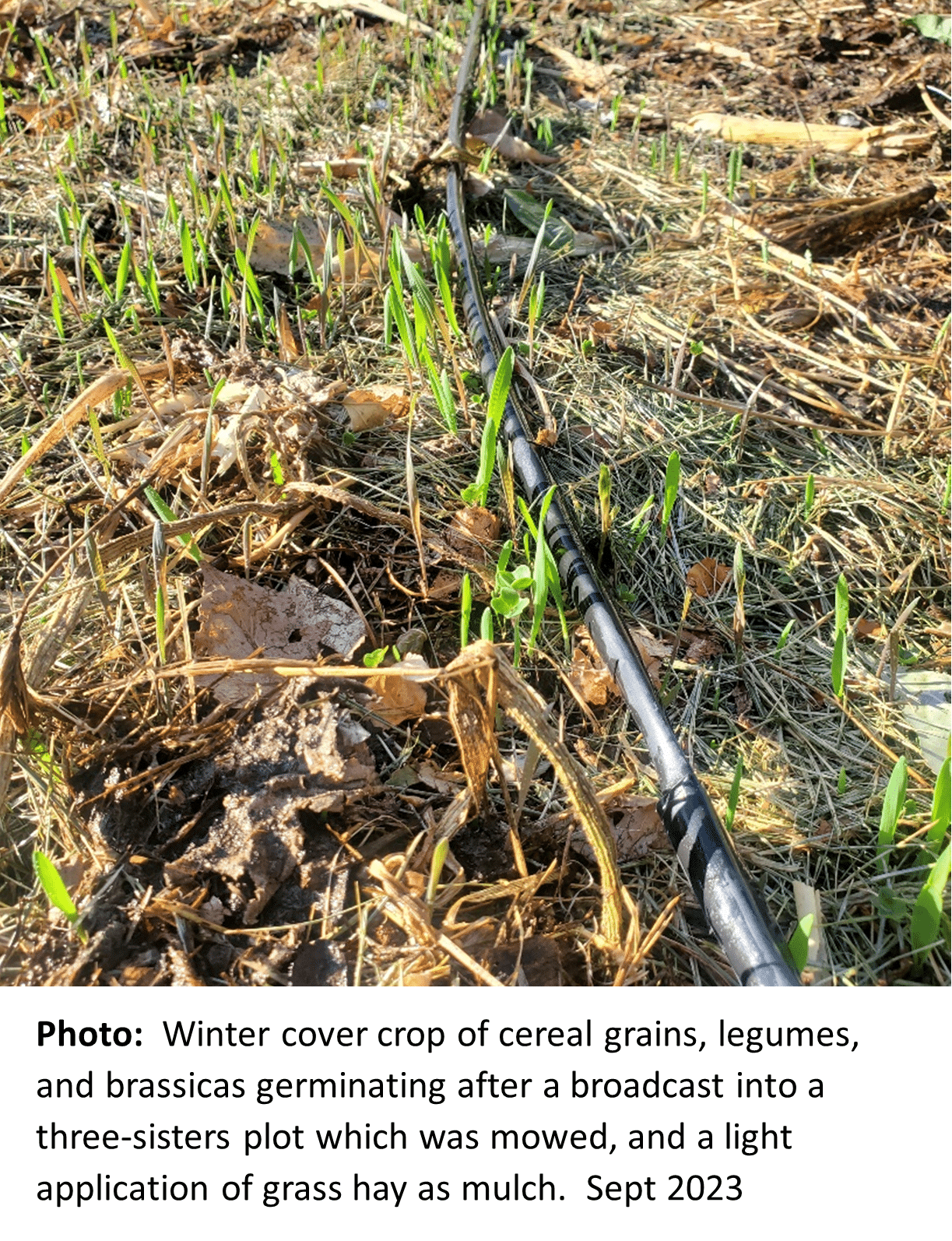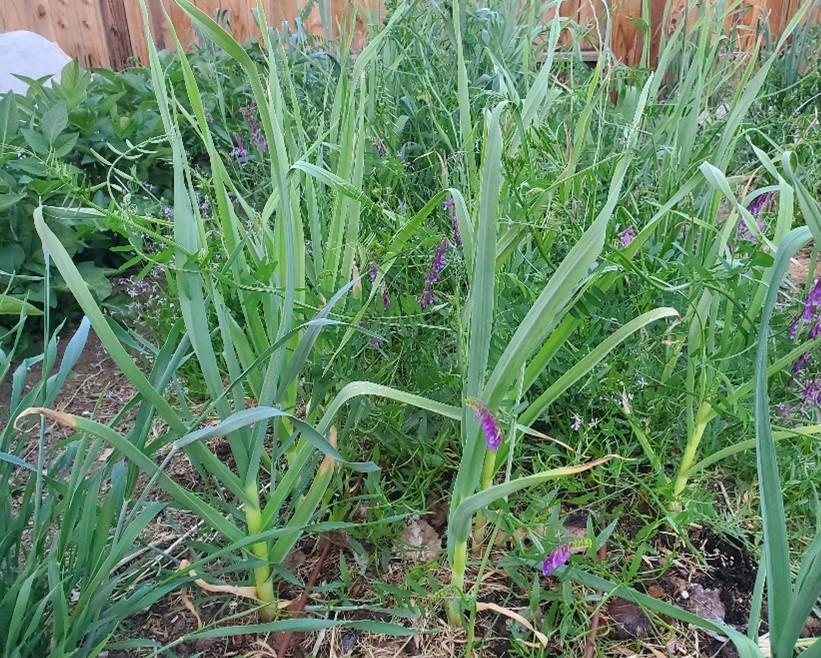
Planning Winter Cover Crop Rotations
Maximizing cover crop benefits in the garden requires strong crop planning with strategic rotations coupled with creative improvision so it’s important to examine strategies and considerations for incorporating cover crops with no-till methods and inter-seeding. These strategies can apply to the market gardener or home gardener, and have applications for larger-scale vegetable production. If you have not read the previous article, Armoring Your Soil for the Winter, I suggest you read it first to become familiar with the basic timing and seasons for each cover crop species.
Identifying Opportunities and Planning
Successful cover cropping starts with a strong crop plan and requires additional planning around cash-crop termination and no-till seeding methods. The timing of winter cover crops can be difficult in the garden because of the crop diversity growing into the fall, each with different end-harvest dates. The opportunity for seeding can be randomized with a checkerboard effect across the field. Therefore, developing a strong cash-crop plan while leaving room for creativity and improvision is essential for overcoming garden complexities and increasing your cover-cropping opportunities.
Bed Preparation and Seeding
Gardeners have traditionally relied on “cleaning” and “flipping” beds before seeding. This is generally accomplished by mechanically removing plants by flail mowing, tillage, cultivation equipment, or by manual labor. Although no-till implies not tilling at all, many no-till market gardeners still rely on some form of light tillage to create a seed bed or apply copious amounts of compost as a mulch to create a seed bed.
Soil prep increases time, labor, and overall farming costs, and potentially increases soil disturbance. The good news is most winter cover crop species can establish in rough ground without a clean seed bed, or any form of soil prep. Establishing cover crops with minimal soil disturbance should be the goal, accomplished by either no-till seed drilling or broadcasting. Turning over a bed with tillage should be our last resort.
Below are some alternative strategies for seeding no-till cover crops at garden scale.
- Find the low hanging fruit – Beds which are relatively clean and bare after harvest require little planning and are ready to seed. Root crops and tuber beds are generally clean and free of residue after harvest, which make them an easy location to direct seed with any seeder, or broadcast seed, followed by applying a straw mulch. If you live in a high-rainfall climate, I recommend applying straw mulch after seeding to reduce crusting and soil loss.
- Flail mow and direct seed with a grain drill – This is the best method in a larger-scale commercial garden (1+ acre). Direct seeding provides the best seed-to-soil contact and opportunity for establishment. A compact, three-point mount no-till seed drill is ideal for cutting through residues and being able to navigate in tight spaces. However, most commercial market gardeners do not own or have access to a tractor driven no-till seeder with down pressure. It is possible to no-till seed into soil without a no-till seeder. With some basic ingenuity a standard seeder can be modified with wavy coulter discs in front of the seed tubes. Many seed companies and soil conservation districts offer compact no-till seeders for rent, generally costing $100-200/day. This is well worth the investment, guaranteeing good seed-to-soil contact, and making the job easy. Running a no-till seeder allows you to seed the furrows if you do not have raised beds. This provides full coverage across the block. On a very small scale, manual push-seeders such as the Jang or Earthway can work if the bed is not compacted and does not have significant surface residue.
- Broadcast seed and flail mow – If direct seeding is not an option, broadcast seeding is your next best choice, and can be highly effective in high-rainfall climates. This technique includes broadcasting seed into the existing crop after harvest, followed by mowing the cash crop. The seeding can also occur while a cash crop is nearing the end of harvest. This method works well in crops that have plenty of space under and around the crop to apply seed to the soil surface, and with crops which produce good surface-mulch residue after mowing (i.e., tomatoes, corn, pumpkins, or peas). Running a ring roller, culti-packer, or some sort of roller over the bed after mowing will promote better seed-to-soil contact and slightly crimps the residue in, leading to better establishment. If the seed germination is poor, there will still be residue armoring the soil. If the mowed residue is not adequately covering the bed, it is best to apply additional mulch. Lastly, time the broadcasting when a good rain is in the forecast, and in the arid west where rain is unpredictable, irrigating will greatly increase the establishment.

- Mow and tarp – Tarping, occultation, and solarizing have become very popular and effective for suppressing weeds and terminating cover crops in the spring. These methods can be used to terminate and decompose crops such as arugula and spring mix, and any low-growing green or herb blanketing the bed. There will likely be a lot of residue left over, and often the decayed residue has to be raked off before seeding.
- Inter-seed into existing fall/winter cash crops – This technique is also known as relay cropping, and works best with wider spaced two-row transplanted crops which are harvested in late fall or early winter (i.e., broccoli or kale). The benefits of this technique allow you to establish the cover crops while the soil temps are still conducive for good germination. Broadcast seed in late-summer to early-fall when the transplants are well established, and the canopies have not closed off the bed. For example, if broccoli is harvested until the end of November, you can have a short growing cover crop established in the bed. After harvest, a flail mower can be run over the bed, or you can hand chop the leaves to open up the canopy for the winter covers or let the broccoli plant winter kill. With fast-growing crops like head lettuce, you can experiment with seeding the bed and then transplanting. I have had very good success with this late-summer transplanting method.

- Overhead irrigation – The ability to irrigate overhead with sprinklers increases cover cropping success and can be the difference maker with some of the strategies discussed. This will allow you to be more confident in a broadcast application. Multiple irrigation supply companies are making low-flow transportable sprinklers which are easy to move around. I recommend checking out Neversink Tools for their variety of market garden-specific tools and easily transportable overhead sprinklers. For larger scale, look at the Netafim Flex NET line of products.
Final Thoughts
I understand many commercial market gardeners and home gardeners use mulching as their winter bed rest. Increasing organic matter and armoring the soil with mulches for the winter is a strong practice and should be utilized in combination with cover crops. However, establishing a living root in the soil while harnessing the sun’s energy via photosynthesis is a much more powerful tool in building soil aggregation. This is why I emphasize the importance of planting cover crops and adding grasses into the garden rotation. Whether you till in the spring or mulch beds for the winter, seeking opportunities to establish winter cover crops with no-till methods will reap large soil health and fertility benefits into the next growing season.
Additional resources:
The Living Soil Handbook, The No-Till Grower’s Guide to Ecological Market Gardening
